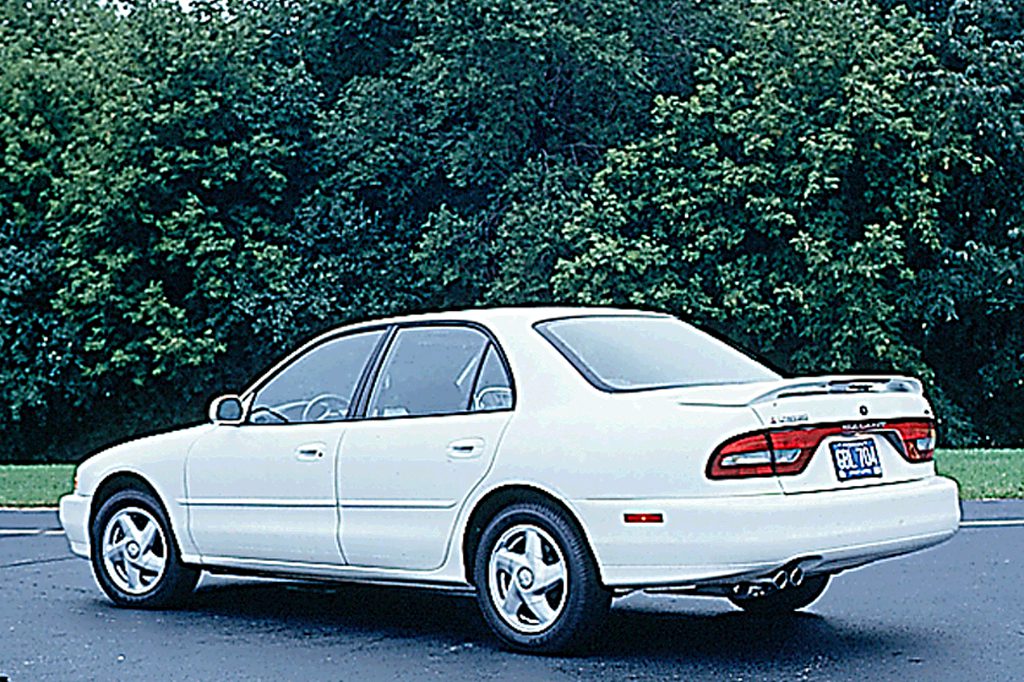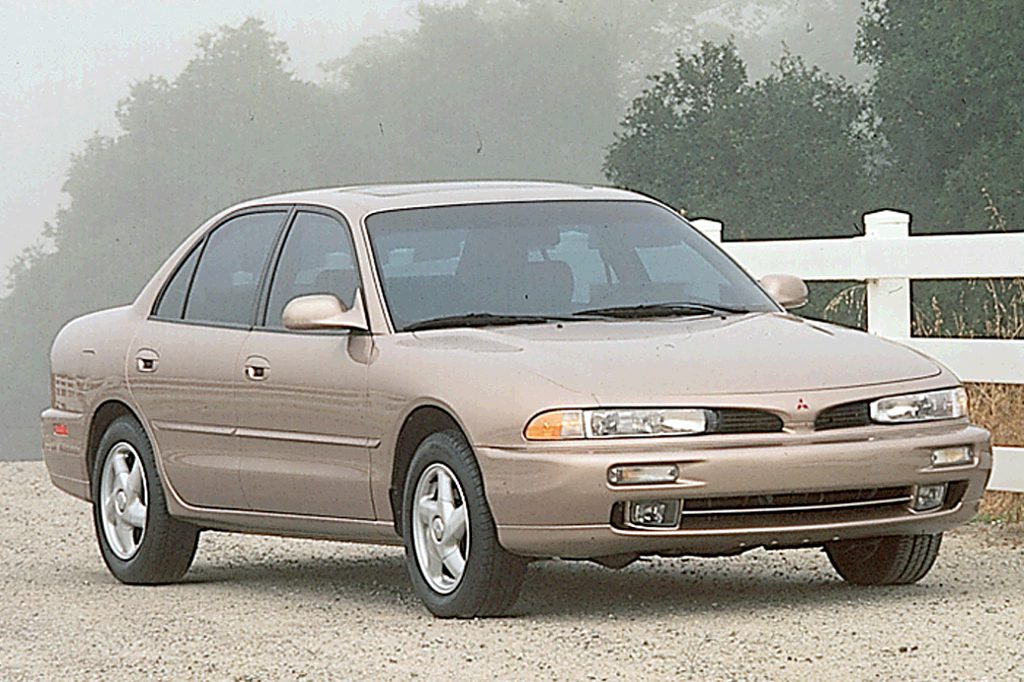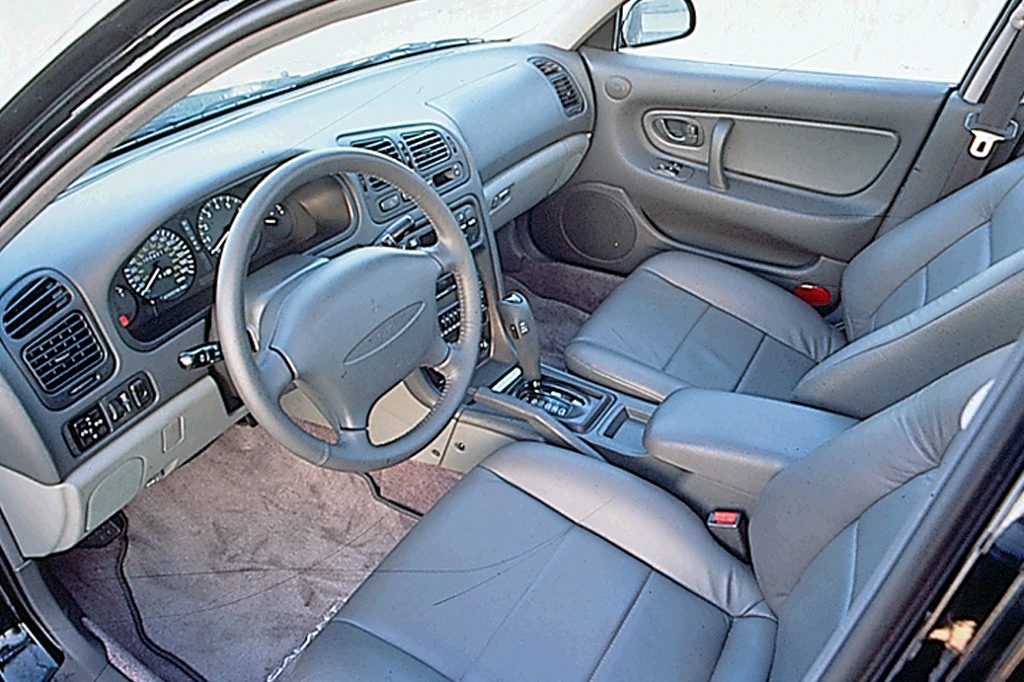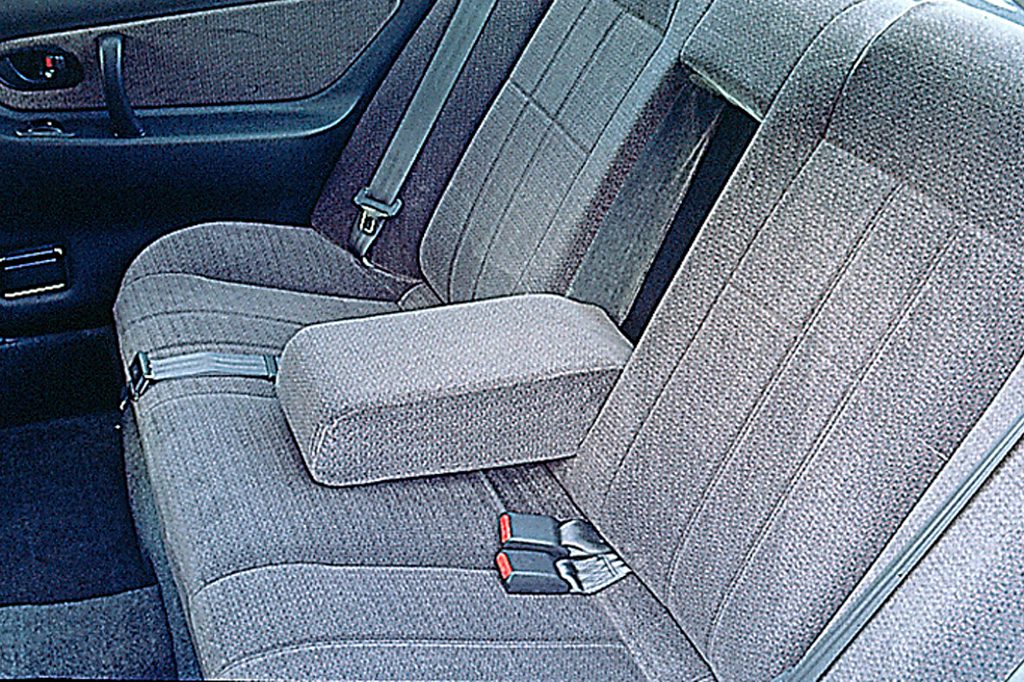| Midsize car; Built in USA |
|
|
| Good condition price range: $1,300 – $2,400* |

1995 Mitsubishi Galant LS V6

1994 Mitsubishi Galant GS

1996 Mitsubishi Galant LS

1995 Mitsubishi Galant LS V6 interior

1994 Mitsubishi Galant ES interior
| Pros: |
|
| Cons: |
|
This generation of the Galant has several good qualities, and we consider it a solid buy. Nevertheless, it lacks a single distinguishing feature to help it stand out in the crowded field of midsize domestic and imported sedans, particularly given the absence of a V6 option.
Overview
The 1994 Galant arrived in June 1993. It came only as a 4-door notchback sedan. Slightly larger than its predecessor, the new Galant rode on a wheelbase that is 1.3 inches longer. All were front-wheel-drive models and each of the four trim levels (S, ES, LS, and GS) came equipped with dual airbags. The Galant retained a 4-cylinder engine under the hood, but boosted overall performance with a new 2.4-liter unit that provided 141 horsepower. A more potent twin-cam unit delivering 160 horsepower was a one-time experiment in the 1994 GS. A 5-speed manual transmission was standard on the S and GS. A 4-speed automatic was standard on the ES and LS, but optional on the S and GS. Antilock brakes were optional across the board.
Yearly Updates
| 1995 Galant Among the modest changes for 1995, the uplevel LS model receives 4-wheel disc brakes, and antilock brakes are an available option for all but the base S model. |
| 1996 Galant The S, ES, and LS models return with several equipment changes for 1996. All can now be ordered with a rear spoiler, and the ES provides a new Premium Package that includes upgraded seat fabrics, a power sunroof, fog lamps, a 6-speaker sound system with cassette, and wider tires mounted on 15-inch styled alloy wheels. |
| 1997 Galant In addition to making several cosmetic changes to the 1997 Galant, Mitsubishi provided the base 4-cylinder with two more horsepower (up to 143). Appearance changes included the addition of a new grille above the car’s reshaped bumper, plus revised taillights. Interiors featured lighter color schemes, more-contoured front seats, a higher center console, and, for the ES and LS, new pseudo-wood accents. |
| 1998 Galant No changes were made to the Galant for ’98. An all-new model was waiting in the wings for 1999. |
